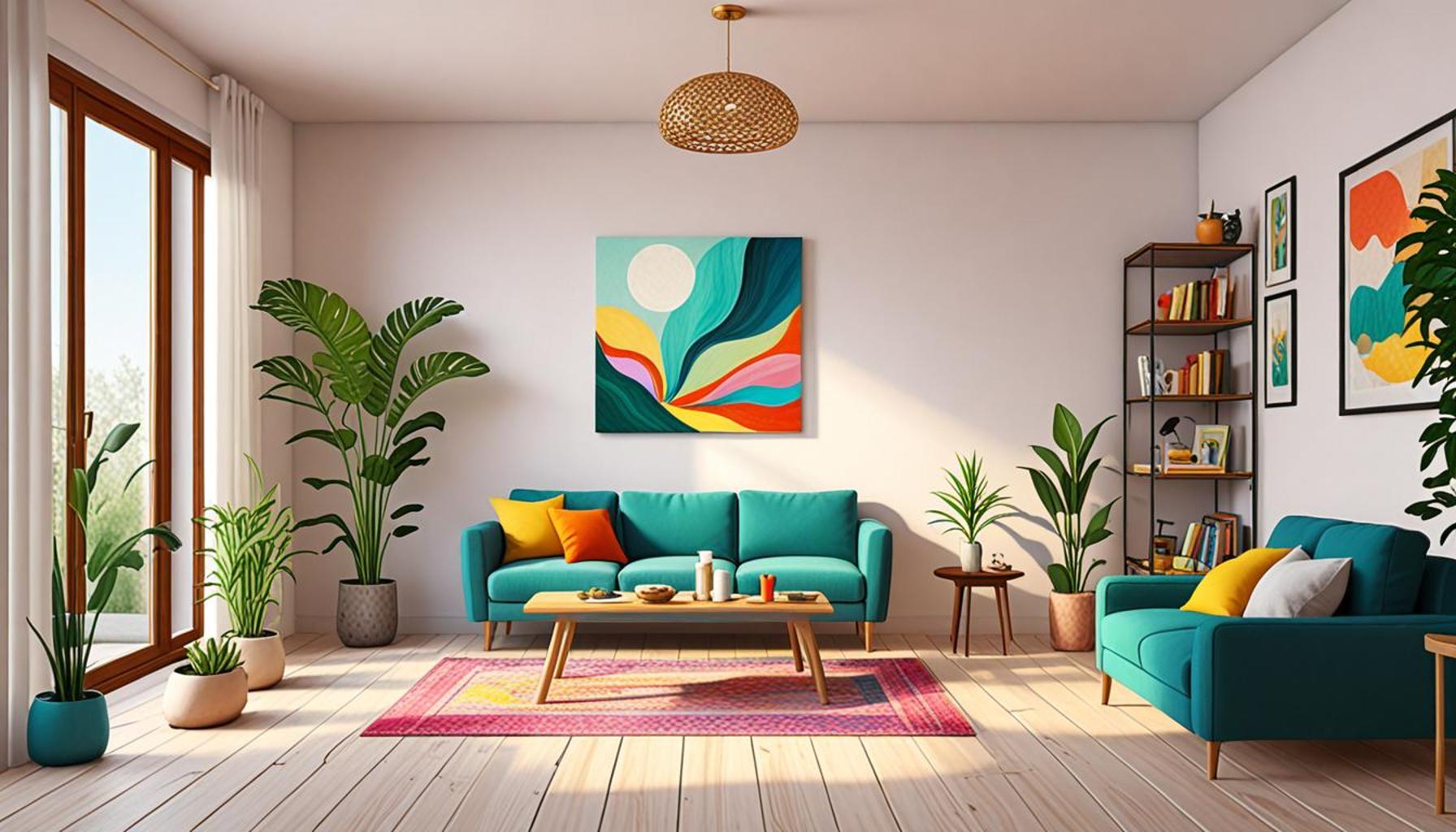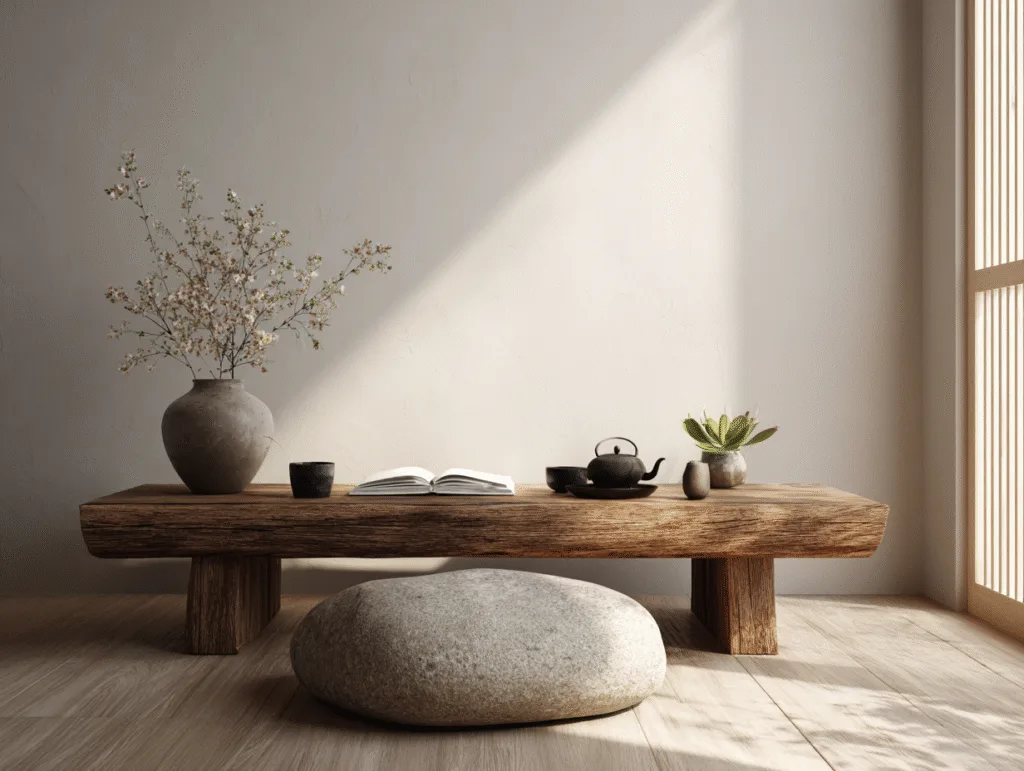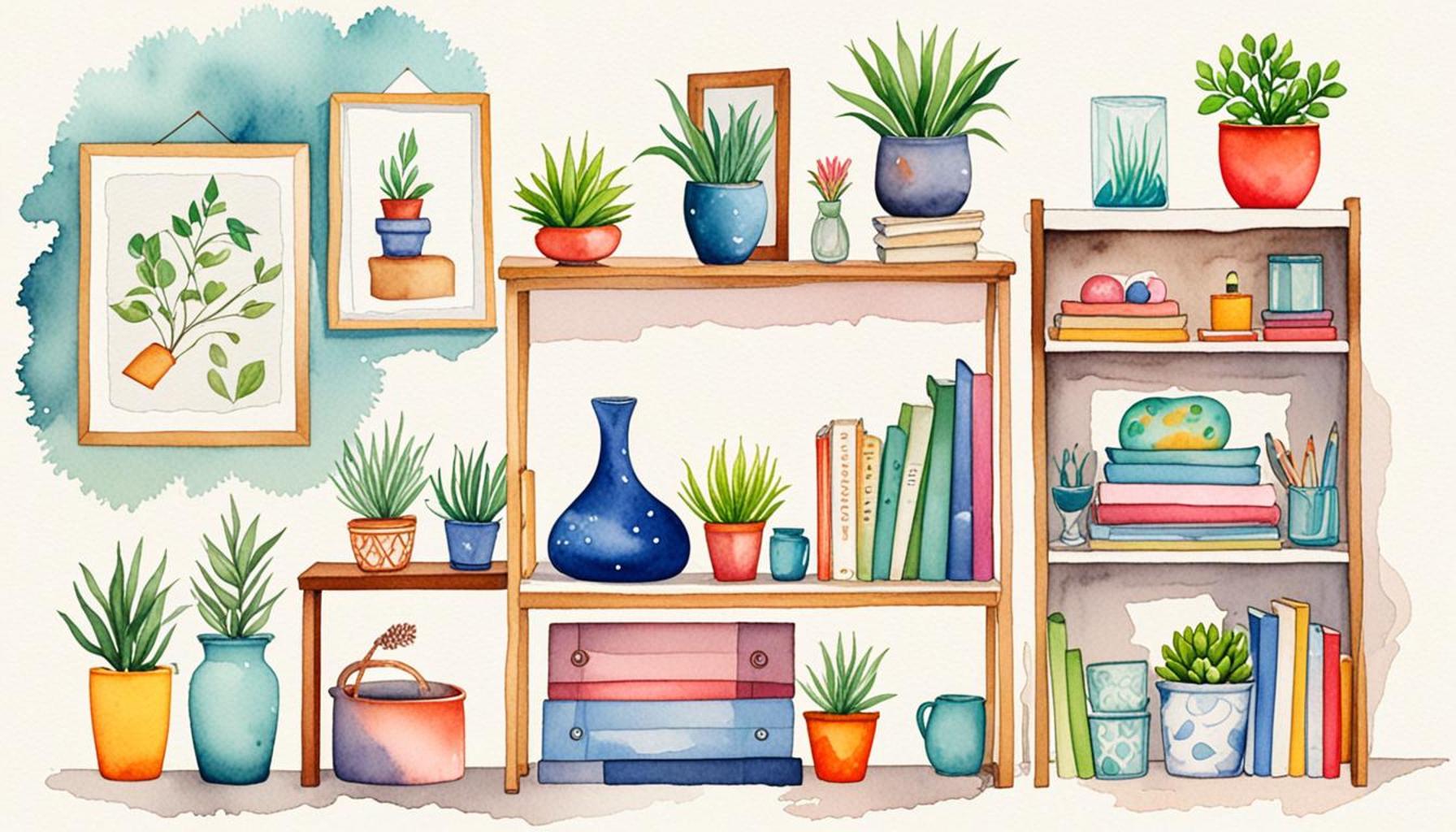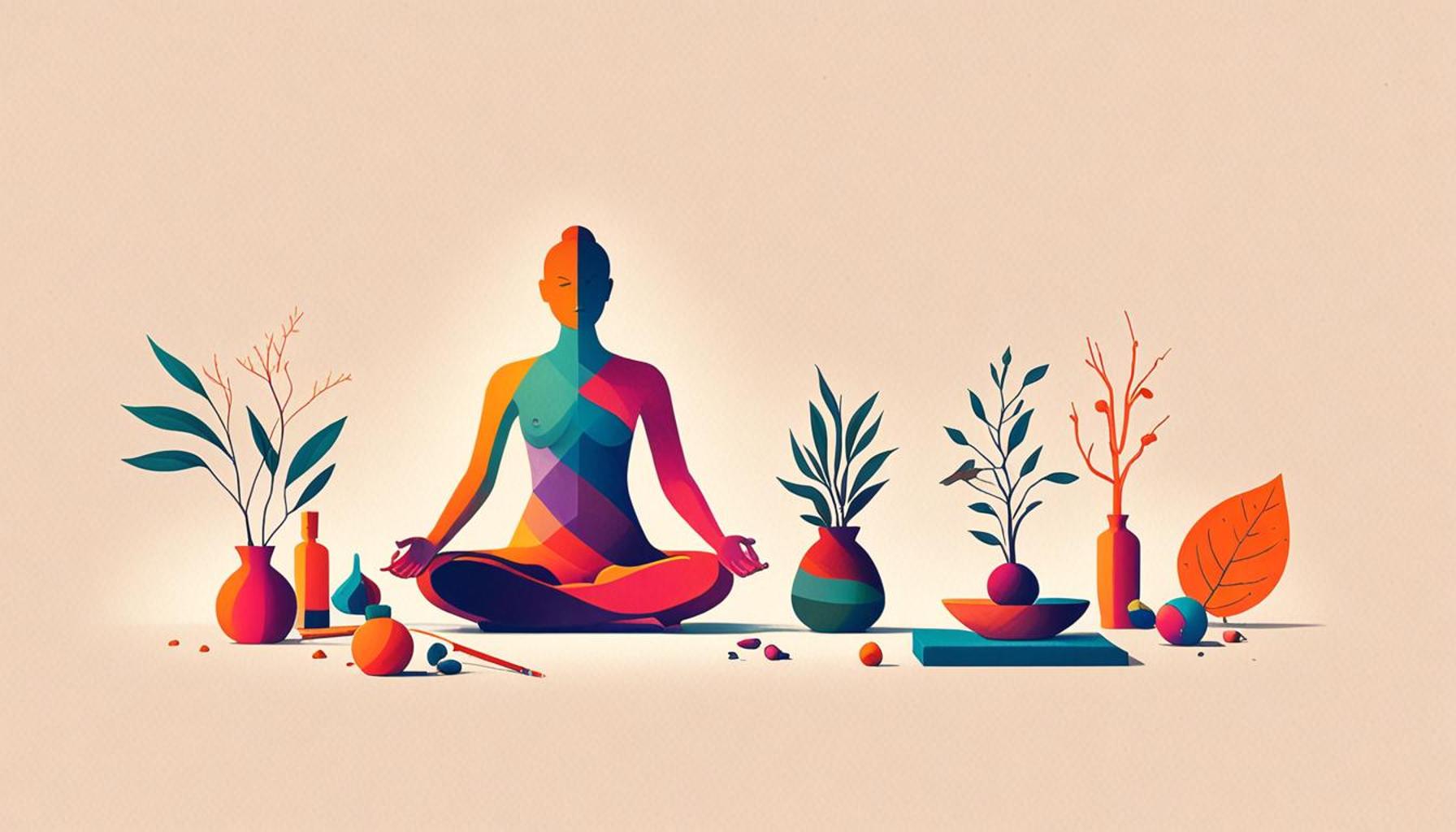Mindful Living and the Art of Simplicity: Creating Spaces That Reflect Calm and Clarity

Discovering Mindful Living
In our fast-paced, technology-driven world, the quest for calm and clarity can feel elusive. Enter the principles of mindful living and simplicity, which offer an antidote to the chaos. By cultivating spaces infused with intention, we can enhance our well-being and foster a serene environment. The core of mindful living is to create a lifestyle that not only reflects our internal values but also contributes to our overall health and happiness.
The Power of Your Space
The environment we inhabit plays a pivotal role in shaping our mental state. Imagine stepping into a room painted in soft, muted tones like light blue or gentle green—these colors are known to promote tranquility and reduce anxiety. In contrast, bold colors such as fiery reds or bright yellows can overstimulate the senses, potentially leading to feelings of unease.
Moreover, incorporating natural elements like indoor plants can transform space from mere functionality to a sanctuary. Studies have shown that plants not only improve air quality but also elevate mood and increase feelings of relaxation. For instance, the well-known pothos plant is particularly popular for its low maintenance and air-purifying capabilities, making it an excellent addition to any home environment.
Furthermore, embracing *minimalist decor* can provide significant benefits. A clutter-free space allows for mental clarity and focus, enhancing productivity and reducing stress. Simple design choices—like maintaining clear surfaces and employing multifunctional furniture—can significantly improve how we engage with our homes. Mindful living encourages us to be present and intentional with our surroundings, inviting us to reflect on what truly matters and enabling us to tailor our spaces to reflect our values and aspirations.
Inviting Calm into Daily Life
As we explore the intersections of mindful living and simplicity, it’s essential to reflect on our personal space design choices. Are our spaces resonating with our lifestyle and emotions? For example, a comfortable reading nook can serve as a personal retreat amidst the chaos of daily life.

Incorporating practices that promote daily mindfulness, such as meditation and gratitude journaling, can further enhance our experience of calm. Even dedicating just a few minutes each day to sit quietly, focus on our breathing, or express gratitude for the little things can profoundly affect our mental wellbeing.
Finally, consider the impact of a simplified environment on overall mental health. Studies consistently show that reducing clutter not only enhances physical spaces but also contributes to improved mental clarity and focus. By consciously simplifying our environments, we embark on a journey that transforms our spaces while also harmonizing our lives. Join us as we delve deeper into the art of creating environments that nurture peace and clarity, paving the way for a more mindful existence.
DIG DEEPER: Click here to discover effective strategies
Transforming Your Home into a Sanctuary
The concept of mindful living extends beyond mere personal habits; it includes the spaces we occupy and how they can enhance our quality of life. By curating our environments thoughtfully, we can create spaces that foster relaxation, focus, and overall well-being. It’s about more than just aesthetics; it’s about creating a lifestyle that nurtures our mental state and supports our emotional needs.
The Role of Design Principles
Intentional design plays a crucial role in shaping our living spaces. Key principles include balance, harmony, and proportion, all of which contribute to a more peaceful atmosphere. Consider a room where furniture is arranged to encourage conversation, or perhaps a layout that allows natural light to flow freely. Such designs do not just please the eye; they also promote well-being by retaining a sense of openness.
Let’s take a moment to look at some specific elements that can be incorporated into our spaces:
- Soft Lighting: Using soft, warm lighting can significantly affect our mood, promoting relaxation and comfort.
- Natural Materials: Wood, stone, and bamboo not only add textural variety but also invite the tranquility of nature indoors.
- Functional Layout: Arranging furniture in ways that allow for easy movement and accessibility fosters a sense of freedom and flow.
- Mindful Colors: Selecting color palettes that evoke calmness can enhance the overall atmosphere of your home.
Paying attention to these design elements allows us to consciously shape our environment. Thoughtful incorporation of such elements can lead to a sanctuary that reflects both inner peace and external simplicity, creating a space that acts as a buffer from the chaos of the outside world.
Implementing Mindfulness in Organization
Another vital aspect of mindful living lies in how we organize our homes. Clutter can be overwhelming and distracting, significantly diminishing our ability to think clearly. A clutter-free environment promotes a clear mind. Adopting organization strategies such as the KonMari Method can be particularly effective. This method emphasizes keeping only those items that “spark joy” and finding designated spaces for every possession.
Consider the following organizational techniques:
- Decluttering Regularly: Schedule periodic decluttering sessions to keep your environment fresh.
- Storage Solutions: Use creative storage solutions such as decorative baskets or under-bed storage to hide away less-used items.
- Visual Boundaries: Use dividers or furniture placement to create specific areas for different activities, such as work and relaxation zones.
- Digital Decluttering: Extend the principles of simplicity to your digital spaces by organizing files and unsubscribing from unnecessary emails.
By integrating these mindful organization strategies into our homes, we create not just a visually appealing space, but also an environment that supports calm and clarity in daily life. With a thoughtful approach to both design and organization, the journey toward mindful living begins at home, setting the tone for our overall well-being.
| Advantage | Description |
|---|---|
| Enhanced Mental Clarity | Living in simplified spaces facilitates mindfulness and helps eliminate distractions, leading to improved focus. |
| Promotes Emotional Well-being | A calm and uncluttered environment contributes to a sense of peace, reducing anxiety and supporting emotional resilience. |
Space is not merely a physical entity but an emotional canvas that shapes our experiences. Adopting the principles of mindful living can unlock doors to tranquility that many seek in today’s chaotic world. Simplicity within our surroundings transforms daily routines into practices of awareness; for instance, intentional organization and thoughtful decor choices lead to environments built on clarity. This artistic approach resonates through every element within the space—be it through natural textures, soothing color palettes, or strategically chosen decor that embodies serenity.Moreover, integrating the art of simplicity can catalyze powerful shifts in our personal relationships. When we create spaces that reflect calm, we invite others to engage in meaningful interactions without the clutter of distraction. By fostering environments rich in calmness and clarity, we lay the foundation for deeper connections, both with ourselves and those around us. Embracing mindful living not only enhances our emotional landscape but cultivates a nurturing habitat where harmony can thrive. The beauty of simplicity lies not only in aesthetics but in the profound impact it has on our overall well-being. Exploring this path invites us to assess our surroundings and, in turn, re-evaluate the life choices that contribute to a more fulfilling existence.
DISCOVER MORE: Click here for effective decluttering tips
Incorporating Nature into Your Living Spaces
Embracing the great outdoors can deeply enhance the essence of mindful living. Nature has a unique ability to calm the mind and reconnect us with a sense of peace. By incorporating elements of nature into our homes, we can create a harmonious link between our living spaces and the environment, enriching our overall well-being.
Biophilic Design Principles
Biophilic design is a concept that promotes an innate connection between humans and nature. Integrating this philosophy into our homes can be as simple as adding plants or optimizing natural light. Here are some effective strategies to consider:
- Indoor Plants: Introducing houseplants not only enhances air quality but also adds vibrancy and life to your space. Plants such as snake plants, pothos, and peace lilies are not only low-maintenance but also ideal for beginners.
- Natural Light: Maximizing natural light can have a profound impact on mood and productivity. Arrange your furniture to align with sunlight or consider using sheer curtains to allow more light to filter in.
- Nature-Inspired Artwork: Incorporate artwork that features natural landscapes or botanical themes. This visual connection to nature can evoke feelings of calm and tranquility.
- Outdoor Views: If possible, position workspaces or seating areas to overlook gardens or natural scenery. The sight of greenery can reduce stress and invite serenity into our everyday lives.
Biophilic design enables us to experience the calming effects of nature, encouraging mindfulness and clarity through our surroundings. As we become more attuned to nature, we foster a deeper appreciation for our environment and, consequently, for ourselves.
Creating Mindful Rituals Within Your Space
Another integral aspect of mindful living involves establishing rituals that promote intentionality and mindfulness. By incorporating dedicated practices into your living environment, you encourage a lifestyle of simplicity and focus. Consider these practices:
- Mindful Mornings: Start each day with a set routine that includes activities such as meditation, journaling, or gentle stretching. Create a designated space within your home that is calm and inviting for these morning rituals.
- Creating a Relaxation Corner: Set aside a specific area in your home that is solely dedicated to relaxation. Include comfortable seating, soft throws, and perhaps a few of your favorite books to encourage quiet moments.
- Weekly Digital Detox: Designate one day each week as a “digital detox” day, where you unplug from digital devices and engage with your environment and loved ones fully. Use this time to reconnect with yourself and your surroundings.
- Gratitude Practice: Create a small space dedicated to expressions of gratitude, whether through a gratitude journal or post-it notes on a dedicated board. This practice can shift our focus from what’s lacking in life to what we appreciate.
By establishing such rituals within our spaces, we create a conscious atmosphere that invites reflection and nurtures our mental clarity. Living mindfully through our environments enables us to be fully present in our daily activities, enriching our lives through simplicity.
DIVE DEEPER: Click here to learn how decluttering can boost your productivity
Conclusion: Embracing Mindful Living Through Simplicity
In a world that often feels chaotic and overwhelming, mindful living offers a powerful antidote. By embracing the art of simplicity, we create spaces that not only reflect our desire for calm and clarity but also enhance our overall well-being. The principles discussed—from biophilic design to establishing mindful rituals—serve as tools to transform our environments into sanctuaries of peace.
Integrating elements of nature into our homes fosters a deeper connection to the world around us, promoting tranquility and mental clarity. Whether it’s through the thoughtful placement of indoor plants or the intentional use of natural light, every detail plays a role in crafting a serene living space. Additionally, the practice of incorporating rituals—such as mindful mornings or relaxation corners—encourages us to slow down and engage with our surroundings, creating a lifestyle grounded in intentionality.
As you embark on your journey toward mindful living, consider how your environment reflects your inner state. Are the spaces around you nurturing or distracting? By striving for simplicity and clarity, we can cultivate a sense of calm that permeates all aspects of our lives. The beauty of this approach lies in its accessibility—anyone can implement these changes, crafting a tranquil home that inspires presence, focus, and joy. Ultimately, as we simplify our spaces, we open ourselves up to a clearer path towards personal growth and well-being.


